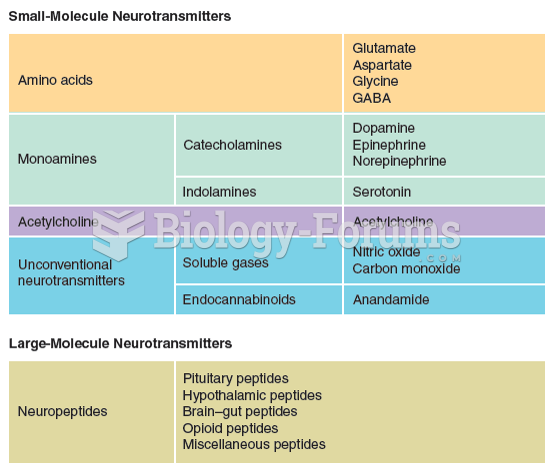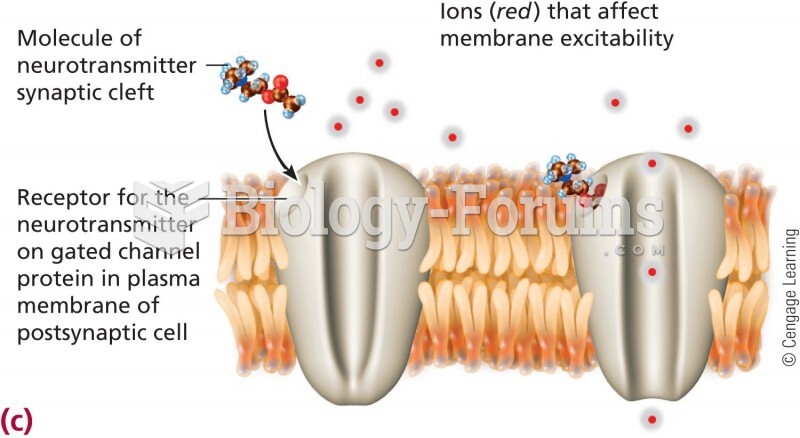|
|
|
Acute bronchitis is an inflammation of the breathing tubes (bronchi), which causes increased mucus production and other changes. It is usually caused by bacteria or viruses, can be serious in people who have pulmonary or cardiac diseases, and can lead to pneumonia.
Nearly 31 million adults in America have a total cholesterol level that is more than 240 mg per dL.
On average, someone in the United States has a stroke about every 40 seconds. This is about 795,000 people per year.
The first oral chemotherapy drug for colon cancer was approved by FDA in 2001.
Pregnant women usually experience a heightened sense of smell beginning late in the first trimester. Some experts call this the body's way of protecting a pregnant woman from foods that are unsafe for the fetus.







